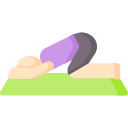Common Mistakes in Beginner Yoga: Start Safe, Grow Strong
Chosen theme: Common Mistakes in Beginner Yoga. Welcome to a supportive space where we turn missteps into momentum. Today we’ll gently unpack breath, alignment, props, pacing, and habits so you feel confident on the mat. Share your questions, subscribe for weekly tips, and practice with curiosity.
Breath Before Shape: The Foundation Beginners Overlook
Holding Your Breath Under Effort
The moment a pose feels difficult, many beginners freeze their breath without noticing. That silent bracing adds tension, spikes anxiety, and shortens stamina. Try whisper-counting your exhales to stay present, softer, and safer in each shape.

Alignment Essentials: Feel Over Aesthetics
Rounding Hard in Forward Folds
Dropping the head and collapsing the ribs to “look flexible” stresses the lower back. Bend your knees, hinge at the hips, lengthen the spine, and imagine breathing space between each vertebra. Flexibility arrives faster when the back feels safe.
Locked Elbows and Overloaded Wrists in Planks
Hyperextending elbows and dumping weight into wrists is common and painful. Spread fingers wide, press through fingertips, grip the mat slightly, and micro‑bend the elbows. Shift some load into legs and core to support the shoulders efficiently.
Neck Strain from Gazing Forward
In backbends and Downward Dog, craning the neck to peek ahead compresses the cervical spine. Keep the gaze neutral and lengthen through the back of the neck. Imagine balancing a peach under your chin—gentle, spacious, and steady.
Warm Up, Cool Down: The Bookends that Protect You
Three Gentle Openers
Try cat‑cow, slow hip circles in tabletop, and shoulder rolls with big, generous breaths. These simple moves lubricate joints, wake sleepy stabilizers, and tell your brain, “We’re moving with care today.” Two minutes change everything.
Cooling Down to Integrate
After effort, many bolt straight to the door. Give yourself legs‑up‑the‑wall, a supine twist, and a quiet Savasana. This downshift helps your heart rate settle, reduces soreness, and seals new movement patterns into memory.
A Quick Science Note
Warm tissues tolerate stretch and load better; cool tissues signal protection. Respect that biology. Gentle heat, progressive range, and calm breath make your practice feel safe. Safe practice is the only practice that becomes consistent.

Blocks for Accessible Length
Place blocks under your hands in forward folds or lunges to lengthen the spine and free the breath. The floor rises to meet you, easing hamstrings while keeping your back happy. Comfort invites exploration without strain or ego.
Straps for Shoulders and Hamstrings
Loop a strap around your feet in seated folds to hinge cleanly, or use it for gentle shoulder openers. You’ll create space evenly rather than yanking one tight area. Share your favorite strap drill with our community.
Walls and Chairs for Balance
Use a wall for Half Moon or a chair for supported Warrior III. Stability reveals alignment you might miss when wobbling. Confidence grows, and soon the support fades naturally. Comment which prop unlocked a breakthrough for you.
Consistency Over Intensity: Build Habits that Stick
Five focused minutes daily can outpace a single exhausting class. Roll out your mat, choose three poses, breathe steadily, and stop while you still feel good. Tomorrow’s body will thank you for leaving some energy in the tank.


Consistency Over Intensity: Build Habits that Stick
Tie practice to an existing ritual: after brushing teeth, step onto the mat for sun salutations. Or brew tea, then do hip mobility while it steeps. Anchoring yoga to familiar cues makes consistency feel effortless and natural.
